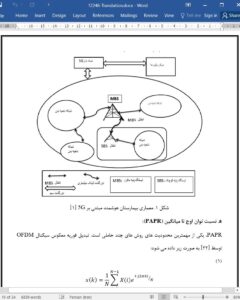Abstract
In the present scenario, orthogonal frequency division multiplexing (OFDM) waveform technique is playing a significant part in smart hospitals. Still, its impact is not effective in smart hospitals due to the numerous limitations such as loss of bandwidth due to the use of guard band, spectrum leakage, high peak to average power (PAPR), high detection delay, and thus along. Right now, fifth-generation (5G) employment is becoming regularized around the world and the state-of-the-art radio system is expected to meet all the demands of smart hospitals. High spectrum access, massive capacity, high throughput, and low PAPR are the requirements of smart healthcare hospitals. The digital hospital has seen tremendous progression in bandwidth requirements. From transmitting medical images to wearable devices, networks must operate at maximum speeds to safeguard patient care. The selection of competent transmission technologies will play an important role in the regularization of digital hospitals equipped with 5G. In the projected work, we focus on the implementation of novel waveforms such as Non-orthogonal multiple access (NOMA), Universal filter multi-carrier (UFMC), and filter bank multi-carrier (FBMC) system. Several parameters such as power spectrum density, bit error rate, capacity, and PAPR of advanced waveforms and OFDM methods are analyzed and studied.
1. Introduction
The rollout of 5G innovation over the Earth has taken up vigorously. The cellular phone standard is now forming in many significant urban communities, and if isn’t yet ready for action in your medical clinic’s old neighborhood, it most probably will be presently [1]. 5G, particularly when serving as a feature of edge processing technique, takes in some key preferences such as low latency, high speed, and dependability, which make it appropriate to empower huge advances inadequacy and strength for categorization of human services use cases: in-building information the board, more elementary treatment of huge imaging records, remote patient checking and virtual consideration, and driving edge tech, for example, tele-robotics and increased reality [2].
6. Conclusion
In this article, we presented a comprehensive study of different advanced technologies, which may play an important role in future smart hospitals based on the 5G network. Health services are one of the significant worries in the current world. The absence of an appropriate framework, unexpected weakness care enactment, and lacking assets, makes concern like administration in human services. Simultaneously, it is accepted that the electromagnetic wave produced from the tower is destructive and any may make a few lethal ailments individuals.











